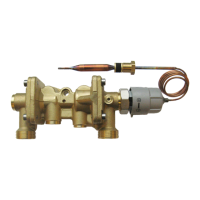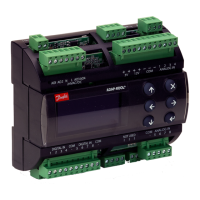90 | © Danfoss | August 2018 AQ00000211
10.6.1 Calculation of flow set-point using anti-jerk functionality
The anti-jerk algorithm uses relative set-point parameters P3572 and P3573 in [%] and absolute set-point parameters
P3734 and P3576 in [IR] and detects the relative or absolute set-point changes in one loop/cycle (10ms). The algorithm
will chose the parameter (absolute or relative) which has the highest change of set-points for each loop (i.e. 10ms) and a
new ‘modified flow set-point’ is calculated. Finally, the low pass filter is applied on the ‘modified flow set-point’ to
calculate the ‘filtered flow set-point’.
The low pass filter in the function is configurable by P3582 (default cut-off frequency is 10Hz, i.e. P3582 set to 100).
If the EH-spool is commanded to go from left- to right-side or opposite, when crossing neutral, the ramps will be
canceled and the parameter set will change from “moving towards neutral position” to “moving away from neutral
position”.
For the relative set-point parameters (P3572 and P3573), the value will change depending on the actual spool position.
For the absolute set-point change parameters (P3574 and P3576), the value will always be a fixed set-point value,
parameters shall be configured accordingly.
Important
An anti-jerk function is normally only used on articulated vehicles, where jerk is very common.
Important
Jerk is a sideways hard movement around the articulated point. This Anti-Jerk functionality will minimize the
unpleasant sideways movement around the articulated point.
As an “on-the-top”-feature, further dampen of STW speed fluctuations can be done. So if the general STW Anti-jerk
setup (P3571 to P3576) does not give the enough dampen/satisfying result, the anti-jerk on-the-top function can be
enabled.

